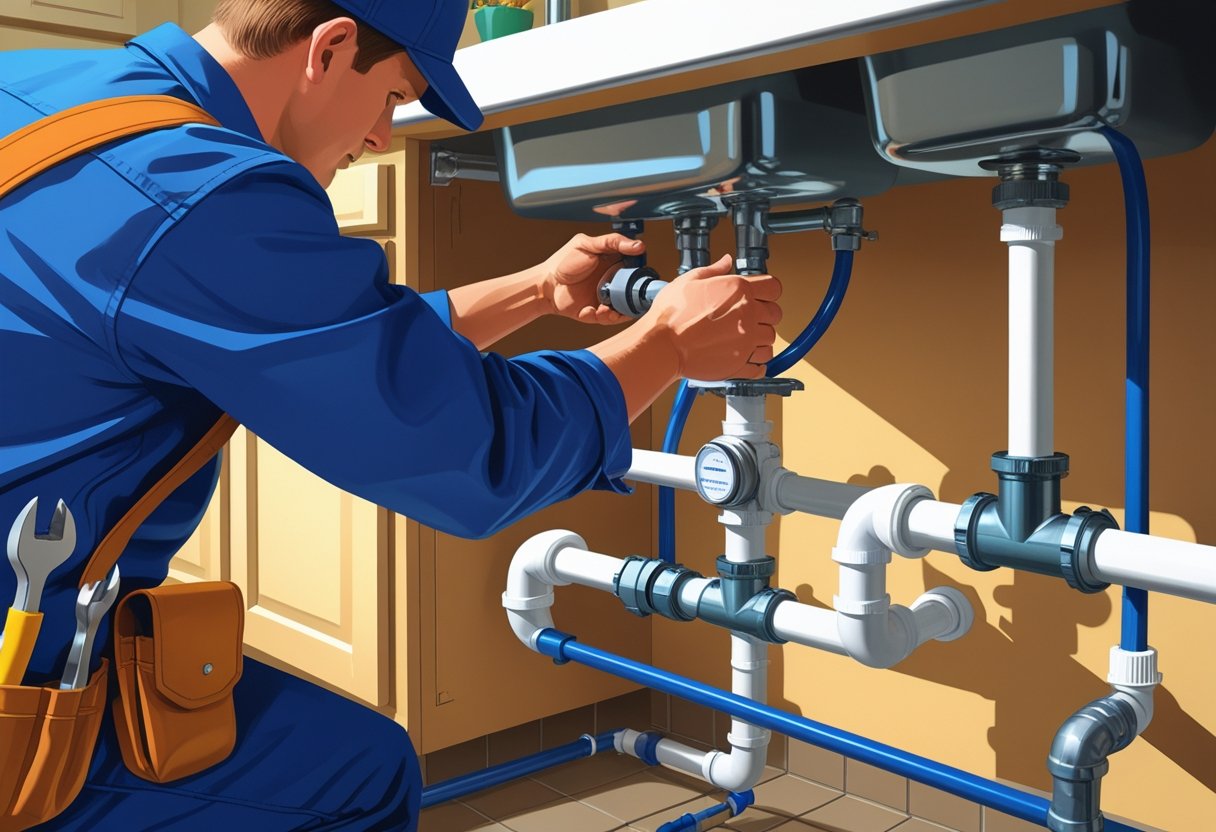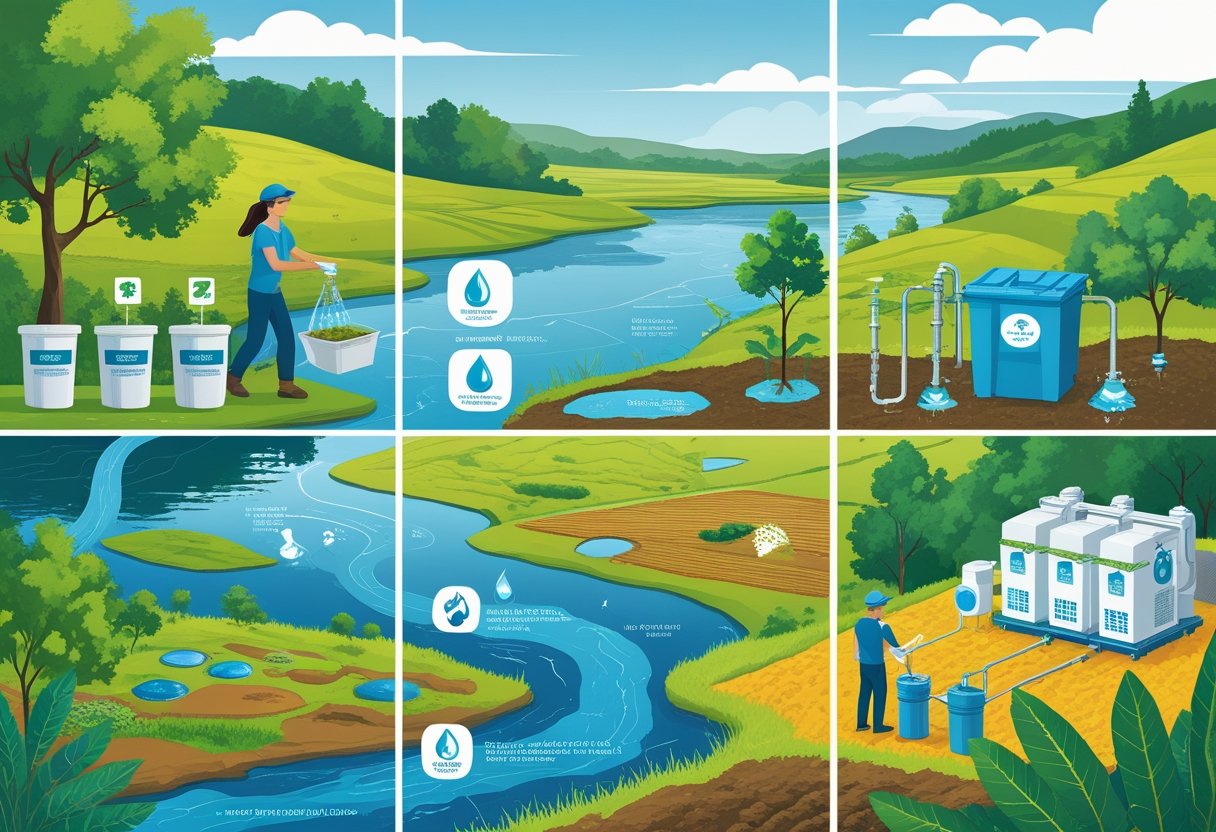Installing a backflow device is a crucial step in protecting your clean water supply from contamination. In most cases, hiring a professional plumber for the installation of a backflow preventer is not only recommended but often necessary. Proper installation safeguards against potential failures that could lead to serious health hazards for your household or business.
Without the right expertise, you risk misalignment or improper sealing, which could compromise the effectiveness of the device. For residents in San Diego County, companies like Pacific Backflow provide experienced technicians who ensure that the installation meets local codes and regulations, giving you peace of mind.
Trying to install a backflow device yourself may seem cost-effective initially, but it could lead to larger issues down the line. Entrusting this task to a skilled plumber ensures that your system functions as intended and helps maintain compliance with local standards. With nearly half a century of service, Pacific Backflow is equipped to handle your installation needs efficiently.
Do You Need a Plumber to Install a Backflow Device?
Installing a backflow device involves specific technical skills and legal considerations. While it may be tempting to tackle this as a DIY project, there are important factors to consider regarding local regulations and practical installation challenges.
Legal Requirements for Backflow Device Installation
In many jurisdictions, installing a backflow prevention device requires adherence to local plumbing codes. Often, a licensed master plumber must complete this task to ensure compliance and safety.
These regulations exist to protect public health by preventing contaminated water from entering supply lines. If you choose to install a backflow preventer without proper licensing, you may face fines or penalties.
For example, in San Diego County, failure to comply with local codes could result in costly repairs and loss of service. It’s essential to verify what your local laws mandate about backflow device installations.
When DIY Installation May Be Possible
If you have plumbing experience, you might consider installing a backflow preventer yourself. However, even in cases where it's feasible, hiring a licensed plumber is often the best option.
Understanding the mechanics and ensuring proper alignment during installation prevents backflow issues later on. Even minor errors can lead to serious complications, potentially endangering your water supply.
If your backflow preventer fails, you may need professional assistance to correct the issue. For reliable installations, Pacific Backflow offers the expertise necessary to meet safety and regulatory requirements. They ensure your backflow device operates effectively, protecting both your property and community.
Understanding Backflow and Backflow Prevention
Backflow is a critical issue that can jeopardize your water supply and public health. Knowing what backflow is, why backflow prevention is vital, and the common scenarios that lead to backflow can help you safeguard your home and community.
What Is Backflow?
Backflow occurs when water flows in the opposite direction from its intended path. This reverse flow can introduce contaminants into your clean water supply. There are two main types of backflow: backpressure and backsiphonage. Backpressure happens when the pressure in a non-potable system exceeds that of the potable water supply, while backsiphonage is caused by negative pressure creating a vacuum. Understanding these types is essential for implementing effective prevention systems.
Why Backflow Prevention Is Important
Backflow prevention is crucial for maintaining the safety and quality of your drinking water. Contaminated water can pose severe health risks, including exposure to harmful bacteria and chemicals. Many jurisdictions require backflow prevention devices to protect public water systems. Regular testing and maintenance of these devices ensure compliance with local regulations and safeguard your community’s health. Authorities often mandate annual testing to confirm that systems function correctly, preventing potential backflow incidents.
Common Backflow Scenarios
Several situations can lead to backflow in residential or commercial settings. One common scenario is when a fire sprinkler system creates backpressure during high usage. Another is when a garden hose is submerged in contaminated water, like fertilizers or pesticides in a pool. Additionally, if a plumbing system experiences a sudden drop in pressure, it can cause backsiphonage. Recognizing these scenarios helps you take preventative measures, such as installing a backflow prevention device. Pacific Backflow offers comprehensive installation services for various properties to ensure your water supply remains clean and safe.
Types of Backflow Prevention Devices
Understanding the various types of backflow prevention devices is essential for protecting your water supply. Each type serves a unique function and has specific applications to prevent contaminants from entering clean water systems. Here are the main categories to consider.
Check Valves and Double Check Assemblies
Check valves are designed to allow water to flow in one direction only, thereby preventing backflow. They are commonly used in residential plumbing systems and provide basic protection against contamination.
Double check assemblies enhance this protection by integrating two check valves in a row. This redundancy ensures that if one valve fails, the other will still work to prevent backflow. These assemblies are often used in applications where potential contaminants are present, such as irrigation systems. If you need installation or maintenance of these devices, consider reaching out to Pacific Backflow, serving all of San Diego County.
Backwater Valves
Backwater valves are critical for homes that are in low-lying areas prone to flooding. They prevent wastewater from returning to your home when sewer lines become overwhelmed. This automatic valve closes during backflow events, ensuring that sewage does not enter your living space.
Installation requirements for backwater valves will depend on local plumbing codes, making it essential to consult a professional. Proper installation and maintenance can help mitigate the risk of costly repairs. If you're concerned about your backwater valve, Pacific Backflow offers reliable inspection and service.
Vacuum Breakers and Specialized Preventers
Vacuum breakers are designed to prevent back-siphonage, a type of backflow that occurs when negative pressure in water lines draws contaminants back into the system. They are typically installed on irrigation systems and provide a simple, effective solution for protecting your drinking water.
Specialized preventers, such as pressure vacuum breakers and reduced pressure zone devices, are used in more complex systems. These devices are essential in commercial and industrial settings where backflow risks are higher. Different types have specific requirements, so understanding which is appropriate for your needs is crucial. For expert advice and installation, consult Pacific Backflow to ensure compliance with local regulations.
Installation Process and Considerations
Installing a backflow prevention device requires careful planning and execution. You must consider which device is suitable for your property, ensure compliance with local regulations, and be aware of potential installation challenges that may arise.
Selecting the Appropriate Device for Your Property
Choosing the right backflow preventer is crucial for effective water protection. Factors to consider include water pressure, the layout of your plumbing system, and any specific local regulations. Common types of devices include reduced pressure zone (RPZ) assemblies, double check valves, and atmospheric vacuum breakers. Each type serves different purposes and has distinct features.
Consulting with a licensed plumber can help ensure you select a device that meets your property’s needs. They can provide insights based on their experience and knowledge of local plumbing codes. Pacific Backflow specializes in guiding you through this selection process, making it straightforward.
Permits, Inspections, and Code Compliance
Before installation, you need to verify if any permits are required in your area. Many regions have specific plumbing codes that govern the installation of backflow devices. Failure to comply with these regulations can lead to fines or the need for costly rework.
After installation, an inspection is often necessary to ensure the device functions correctly and adheres to local standards. Pacific Backflow can handle these inspections and help maintain compliance with city requirements, giving you peace of mind that everything is in order.
Common Installation Challenges
Installing a backflow preventer may encounter several challenges. First, there could be limited space to install the device, necessitating creative plumbing solutions. Second, if the existing plumbing system is outdated or damaged, it might require additional repairs or upgrades.
Improper installation can lead to leaks or malfunctions that jeopardize the water supply. Working with a licensed plumber ensures that the installation adheres to best practices and minimizes these risks. Their expertise can make your installation process smoother and more efficient, ensuring that your system is safe and reliable.
Maintenance, Testing, and Long-Term Care
Maintaining your backflow preventer is essential to ensure safe and compliant operation. Regular testing, along with monitoring for signs of failure, guarantees your system prevents contamination of your water supply. This section outlines the critical aspects of maintenance and testing.
Annual Testing and Certification
Annual testing is a vital requirement for backflow prevention devices. Not only does it ensure compliance with local regulations, but it also confirms that your device functions correctly.
Certified professionals, like those from Pacific Backflow, perform these tests efficiently, typically within days of your request. If your backflow preventer fails the test, they will provide a detailed proposal for necessary repairs or replacements.
Always keep a record of test results to maintain compliance and facilitate future inspections. Testing helps protect against issues like sewage backup, ensuring that contaminated water won’t flow back into your clean supply.
Recognizing Signs of Failure or Malfunction
Identifying early signs of failure in your backflow preventer can save you from costly issues. Watch for irregularities such as water leaks around the device, unusual noises during operation, or decreased water pressure. These are indicators of a malfunction that needs immediate attention.
If you notice any of these signs, contact a trusted service provider. Pacific Backflow offers repairs to restore function and prevent further complications. Timely action ensures the safety of your water supply and compliance with regulations, protecting both your home and community.
Frequently Asked Questions
When considering the installation of a backflow prevention device, various questions often arise. Understanding the legal requirements, installation process, costs, and maintenance will provide clarity on this essential aspect of property management.
What are the legal requirements for installing backflow prevention devices?
Most jurisdictions require backflow prevention devices to protect the water supply. Regulations may vary, so it's essential to check local ordinances before installation. Typically, a licensed plumber is necessary to ensure compliance with these laws.
Can a homeowner install a backflow preventer or is a licensed plumber needed?
While some homeowners may attempt to install a backflow preventer themselves, it is highly recommended to hire a licensed plumber. This ensures that the installation meets all safety codes and regulations, reducing the risk of future issues.
What factors determine the cost of backflow preventer installation?
The cost of installing a backflow preventer can depend on several factors, including the type of device, the complexity of the installation, and local labor rates. Generally, you might expect costs to start around $100 to $200, but more complex systems can be significantly higher.
How often does a backflow prevention device need to be tested or replaced?
Backflow prevention devices typically require annual testing to ensure they function correctly. Depending on the device's condition and local regulations, replacement may be necessary every few years or when they fail a test.
Are there different types of backflow prevention systems for residential and commercial properties?
Yes, backflow prevention systems can differ between residential and commercial properties. Commercial systems often require more robust solutions due to higher water usage and greater risk factors. A licensed plumber can recommend the appropriate device based on your specific needs.
How can I tell if my property requires a backflow prevention device?
To determine if your property needs a backflow prevention device, consider your water supply connections and irrigation systems. Consulting with a licensed plumber can provide clarity, especially if you have cross-connections that could pose a risk of contamination.
For assistance with backflow preventer installation and testing, consider reaching out to Pacific Backflow. They offer comprehensive services across San Diego County, ensuring that your system meets all safety and regulatory requirements.











